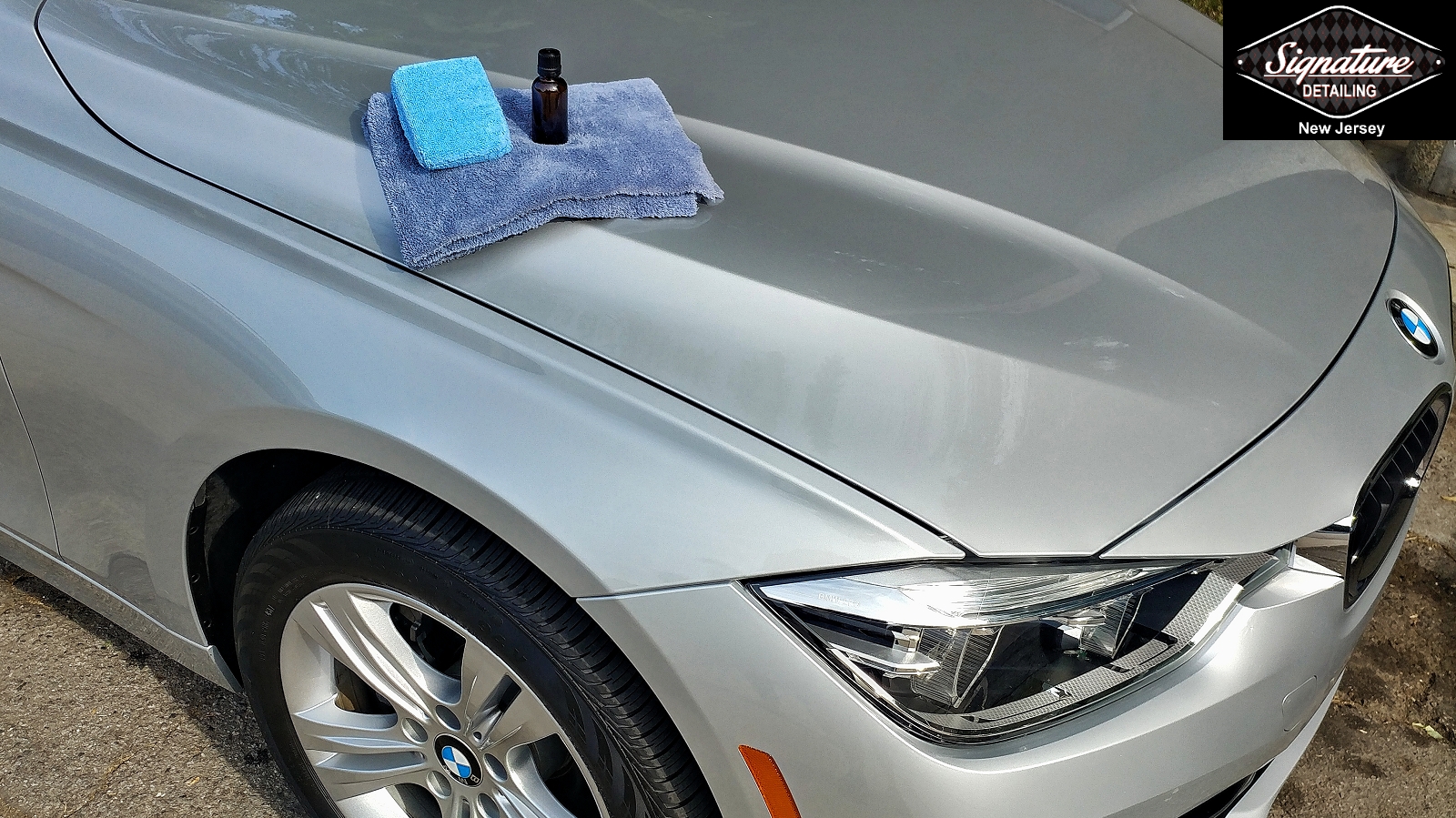Just How Outlining Porcelain Finishing Enhances the Long Life of Your Vehicle's Paint
Ceramic covering has become a crucial modern technology in auto describing, supplying a long-lasting solution for protecting the stability of your automobile's paint. By forming a protective layer that successfully secures against UV rays, chemical stains, and ecological pollutants, this ingenious covering not just enhances the aesthetic appeal of the automobile yet likewise adds to its general durability. Comprehending the complexities of exactly how ceramic finishing works and its advantages over traditional wax can supply beneficial insights for auto owners. What elements should you think about prior to making the investment?
What Is Ceramic Layer?
Recognizing the safety advantages of ceramic coating begins with acknowledging its composition and capability. Ceramic finishing is a fluid polymer related to the external surface areas of vehicles, mostly made to improve and protect automobile paint. The crucial component of this finish is silicon dioxide (SiO2), which is stemmed from all-natural products like sand. This substance forms a strong chemical bond with the manufacturing facility paint, producing a protective layer that is both long lasting and hydrophobic.
The finish's application includes careful preparation of the vehicle's surface area, which must be free from contaminants, scratches, and flaws to make certain optimal adhesion. When used, the ceramic layer remedies to develop an inflexible shield that can endure various environmental factors, including UV rays, chemical spots, and oxidation.
Moreover, ceramic finishings are not merely surface-level treatments; they permeate the paint to offer a long lasting protection. This functionality expands the life expectancy of the vehicle's looks while keeping its value over time. Recognizing these basic elements of ceramic covering is necessary for automobile proprietors looking for efficient solutions for paint conservation and enhancement.
Advantages of Ceramic Layer
The advantages of ceramic layer expand far past its standard safety features. Unlike typical wax or sealants, ceramic finishes create a solid bond with the vehicle's paint, permitting it to withstand environmental threats such as UV rays, acid rain, and road salt.
Additionally, ceramic coatings offer hydrophobic residential or commercial properties, meaning they drive away water and impurities. This characteristic not only makes the car simpler to tidy yet also decreases the frequency of cleaning, saving both effort and time for cars and truck proprietors. The slick surface produced by the layer protects against dust and grime from sticking, enhancing the vehicle's total tidiness.
Furthermore, ceramic coatings enhance the deepness and clearness of the paint, giving vehicles a shiny coating that is aesthetically striking. This aesthetic improvement additionally contributes to preserving the cars and truck's resale worth, as a well-kept outside is a major marketing point for potential purchasers. On the whole, the advantages of ceramic covering make it a beneficial investment for any person wanting to shield and boost their vehicle's paintwork.
How Ceramic Finish Works

The finishing's hydrophobic homes drive away water and dirt, protecting against the build-up of gunk on the surface area. This not only makes the vehicle simpler to clean but additionally reduces the likelihood of scrapes and swirl marks triggered by standard washing approaches. The ceramic layer acts as a shield against UV rays, which can create fading and oxidation over time.
Once healed, the coating displays impressive resistance to chemicals, including roadway salts, bird droppings, and tree sap, which can otherwise damage the paint. The longevity of ceramic coatings can last for numerous years, depending on factors such as upkeep and environmental conditions. Overall, the chemical bonding procedure of ceramic coverings gives a robust defense that maintains the integrity and appearance of an automobile's paintwork.
Comparing Ceramic Finishing to Wax
Comparing ceramic coating to typical wax reveals significant differences in efficiency and longevity. While both items aim to secure a car's paint, their compositions and longevity established them apart. Wax, normally made from natural carnauba or artificial products, supplies a short-lived shield that typically lasts just a few weeks to a few months, depending upon environmental problems and maintenance regimens.
On the other hand, ceramic finishings are sophisticated remedies composed of inorganic materials that bond chemically with the automobile's paint. This develops a robust, semi-permanent layer of defense that can sustain for numerous years. Because of this, ceramic finishes supply remarkable resistance to UV rays, chemical discolorations, and physical abrasion, substantially lowering the threat of oxidation and fading.
Additionally, the hydrophobic homes of ceramic coverings ensure that water beads up and rolls off the surface, making it harder for dirt and crud to stick. This ease of cleaning is a significant advantage over wax, which can bring in dirt and need regular reapplication. Inevitably, for vehicle owners looking for lasting defense and boosted aesthetic allure, ceramic coverings offer a more efficient choice to standard wax items.
Maintenance Tips for Long Life
Correct maintenance is crucial for making the most of the longevity of a ceramic covering. Use a pH-balanced cars and truck shampoo to stop breaking down the finishing, and stay clear of automated vehicle cleans with extreme brushes that can create micro-scratches.
To preserve the hydrophobic residential or commercial properties of the ceramic covering, take into consideration applying an upkeep spray or booster particularly designed for ceramic coatings every couple of months. This will strengthen the protective layer and enhance water beading.
Additionally, avoid subjecting the coated surface to extreme ecological conditions whenever possible. Vehicle parking in shaded areas or utilizing a vehicle cover can stop UV damage and contamination from bird droppings, tree sap, or industrial after effects.
Finally, check the finishing occasionally for indications of wear or damages. If you discover a decline in hydrophobic advice actions, it may be time for a professional reapplication. By adhering to these maintenance suggestions, car owners can dramatically extend the life and performance of their ceramic finishing, ensuring that their auto's paint remains protected and visually appealing for years to find.
Conclusion
